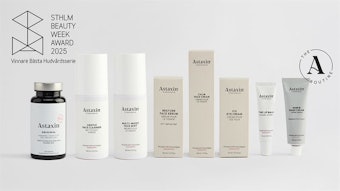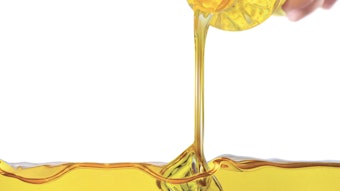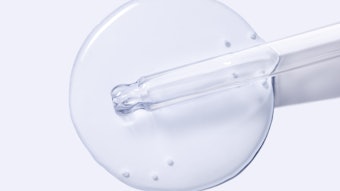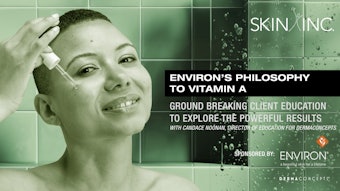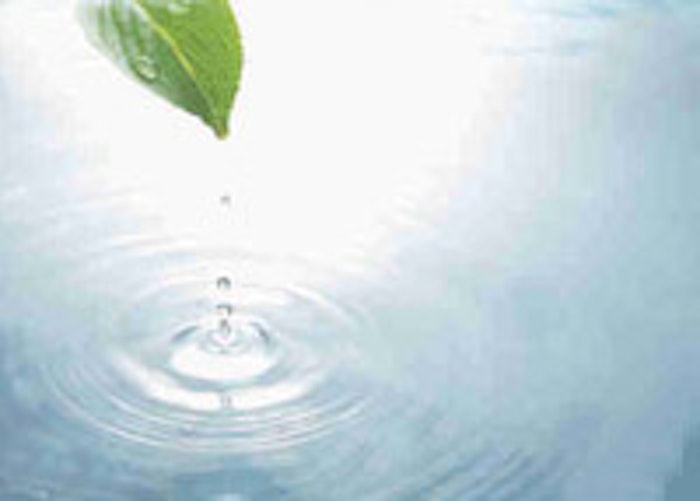
In Part 1 of this article, which ran in the February 2010 issue of Skin Inc. magazine, common questions about green, natural and organic product claims were addressed. Now, the path is cleared for deciding which degree of organic is suitable to you as a spa professional. The Five Degrees to Organic is an unofficial scale created by Marilyn Patterson, and as it approaches the fifth degree, ingredients begin to better meet established regulations and move from the designation of natural/organic to certified organic.
You must first figure out your own organic standards and determine the ingredients that you deem to be important as organic and those you consider to be safe enough with or without organic certification. This is acquired knowledge, and is the personal preference of each individual. Understanding these degrees will help to better equip spa professionals to make natural and organic product choices.
Degree #1: Natural or organic ingredients used for marketing only
An ingredient that delivers efficacy is rarely inexpensive. Companies selling low- to mid-priced cosmetics may prefer to spend their money on marketing rather than on expensive ingredients. Marketing claims must follow government guidelines, which differentiate between cosmetic and drug claims, but a lot of puffery is allowed. Therefore, it sometimes can be difficult for the professional to identify the truth in the advertising. A quick look at the ingredient list will give an educated professional an idea of where a product stands. If the natural or organic ingredient that is being marketed is near the bottom of the ingredient listing, than it may not be used at an efficacious level.
Degree #2: Natural or organic ingredients used for efficacy in a non-natural base
There are many natural and organic ingredients that have proven efficacy and have been found to be safe by the U.S. Food and Drug Administration (FDA), Federal Trade Commission (FTC) and Health Canada, but are in a product with accompanying ingredients that do not fit the guidelines for natural and organic ingredients. Often, a botanical, or plant-based, active is chosen instead of a synthetic active because the product can then be described as natural in marketing claims. Spa professionals need to evaluate the ingredients listed on the label before making a decision. The natural or organic ingredient will have a Latin botanical name, and you would expect it to appear before the middle of the ingredient list. But at this degree, any other ingredient names will not fit the definition for acceptable natural or organic ingredients. The marketing information that goes with these products will mention efficacy studies if they have them. If not, you cannot be sure of the effect of the botanical, or if it is even used in an efficacious concentration.
Degree #3: Natural or organic ingredients, but the product is not certified
In North America, there is still some debate about which certification body is the most credible. As a result, many companies are following the European guidelines for ingredient choices, but are not going through the certification process. At this degree, all ingredients on the label should follow the guidelines for natural supporting and organic ingredients. The third degree is usually acceptable, but it can be difficult to assess which products fall into this category. Even if a botanical ingredient is used, it may have been extracted with a petroleum-based nonrenewable solvent, and the solvent will not be listed on the label. But it is in this third degree that you are most likely to find efficacious products at more reasonable prices.
Degree #4: Certified natural or organic
This category is where the debate begins. Many certifying bodies are stating that products are organic according to their regulations, but the percentage of organic botanicals required is below the 95% organic content line. These should be considered natural rather than organic. If a product is certified natural or organic, it will have a logo denoting this. A certified natural or organic cosmetic or skin care line must use ingredients that follow strict rules for safety and environmental protection. The main difference between Degree #3and Degree #4 is that a certified natural product must use certified organic botanicals when possible, and nonorganic botanicals must be 5% or less of the botanical content to qualify at Degree #4. The problem with noncertified organic botanicals is that pesticides or other harmful impurities may be present because the plants may not have been grown organically. Many efficacious botanical actives are excluded because they are not certified organic, and there are few organic actives available at this time. There is no way to tell if the botanical listed on the label has been grown without pesticides or herbicides unless the cosmetic has undergone a certification process.
In Europe, the Cosmetic Organic Standard (COSMOS) was one of the first European harmonized standards for organic personal care products. Many countries in Europe have individually developed standards for natural or organic cosmetic products, and in an effort to standardize these regulations, six of the European organic personal care regulatory bodies have formed COSMOS.
COSMOS requires 95% of agricultural ingredients to be organic and 20% of total product by weight, including water, to be organic. It does allow a maximum of 5% synthetic content. But this organization is still under development and will not have products certified under it for another year or two. The six founding member companies—BDIH from Germany, BIOFORUM from Belgium, COSMEBIO and ECOCERT from France, ICEA from Italy, and the Soil Association from the United Kingdom—still certify under their own logos and standards.
These certifying bodies have been classified as natural or organic rather than certified organic because the percentage of organic ingredients required is not as high as the food organic standard.
This statement should be qualified because the calculations for Degree #4 certifying bodies include water, while the United States Department of Agriculture (USDA) National Organic Program (NOP) calculations exclude water. This difference means that the organic percentage of a product that has been certified by Degree #4 cannot be directly compared by a certifying body to a USDA-certified product. It is possible to make an efficacious cosmetic product in this category without the added expense of certification. This degree is a good choice for spa professionals because the work of verifying organic ingredients has already been completed. However, it is still important to contact the certifying body to ensure that this product is using the logo legally.
Degree #5: Certified organic
In the United States and Canada, this is the strictest certification of organic and until recently, only pertained to food. The following list is not exhaustive.
1. USDA Organic. In the United States, the most recognizable logo is USDA Organic. It is the strictest of organic standards because it really is a food standard, requiring at least 95% organic content in order to use the logo. It disallows synthetic preservatives and most chemical ingredient processing. There are four categories of organic under the USDA.
100% organic. Excluding water and salt, the product must contain only organically produced ingredients. Products may display the USDA organic seal, as well as the certifying agent’s name and address.
Organic. The product must contain at least 95% organically produced ingredients, excluding water and salt. Remaining product ingredients must consist of nonagricultural substances that are approved on the NOP list, or nonorganically produced agricultural products, not commercially available in organic form, also on the NOP list. Products may display the USDA organic seal and must display the certifying agent’s name and address.
Made with organic ingredients. Products contain at least 70% organic ingredients, and the product label can list up to three of the organic ingredients or “food” groups on the principal display panel. For example, body lotion made with at least 70% organic ingredients, excluding water and salt, and only organic herbs may be labeled either “body lotion made with organic lavender, rosemary and chamomile” or “body lotion made with organic herbs.” Products may not display the USDA organic seal and must display the certifying agent’s name and address.
Less than 70% organic ingredients. Products cannot use the term “organic” anywhere on the principal display panel. However, they may identify the specific ingredients, excluding water and salt, that are USDA-certified as being organically produced on the ingredients statement on the information panel. Products may not display the USDA organic seal and may not display a certifying agent’s name and address.
2. NSF. The National Science Foundation (NSF) provides one of the first U.S. organic standards to emerge after the USDA for cosmetic manufacturers. NSF requires a minimum of 70% of all ingredients, excluding water, to be organic in order to use its “Made With Organic” claim. NSF allows a broader array of preservatives and chemical processes than the USDA. Because this organization only started certifying cosmetics in 2009, there are few available products on the market under this certification at this time.
3. OASIS. OASIS is an industry association formed to certify personal care products specifically, in order to separate cosmetic standards from food standards. It requires 85% of all agricultural ingredients to be organic and allows a broader array of preservatives than the USDA. Because this organization started in 2008, there are few cosmetic products currently on the market that have this certification. There are two levels available: “Organic” features the OASIS logo and “Made with Organic” requires 70% organic ingredient content and does not present the logo. OASIS plans on increasing the required organic content as the industry develops more organic ingredients.
Degree #5 includes the most organic ingredients, but ingredient limitations make it difficult to formulate elegant and effective creams, or mild, pH-friendly cleansers. Oil serums and balms, including lip balms and hydrosol sprays, will be the most common kinds of products that carry these logos.
Become familiar
Spa professionals have many choices to make when deciding on a product line. Because cosmetic product and ingredient certifications and regulations are not unified, the process can become more confusing the deeper you delve into it. However, as a decision-maker, it will help if you consider the following points carefully.
- The ingredient listing on labels is very important; familiarize yourself with all of the details and accompanying claims.
- Seek out the designated ingredient expert at the cosmetic companies you are researching in order to compare your findings and learn even more.
- Confirm that there is a valid certification logo when the word “organic” is used to describe a product.
- If a product has a logo, find out about the certifying body that provides that logo and make sure it agrees with your own philosophy, and that it is indeed from a reputable source. Many companies create their own logos, that have no certifying bodies behind them.
- Look for valid proof of a product’s promise of efficacy.
By keeping your client’s needs in mind and your organic philosophy at heart, this scale may help you make the decision that is right for your business.
